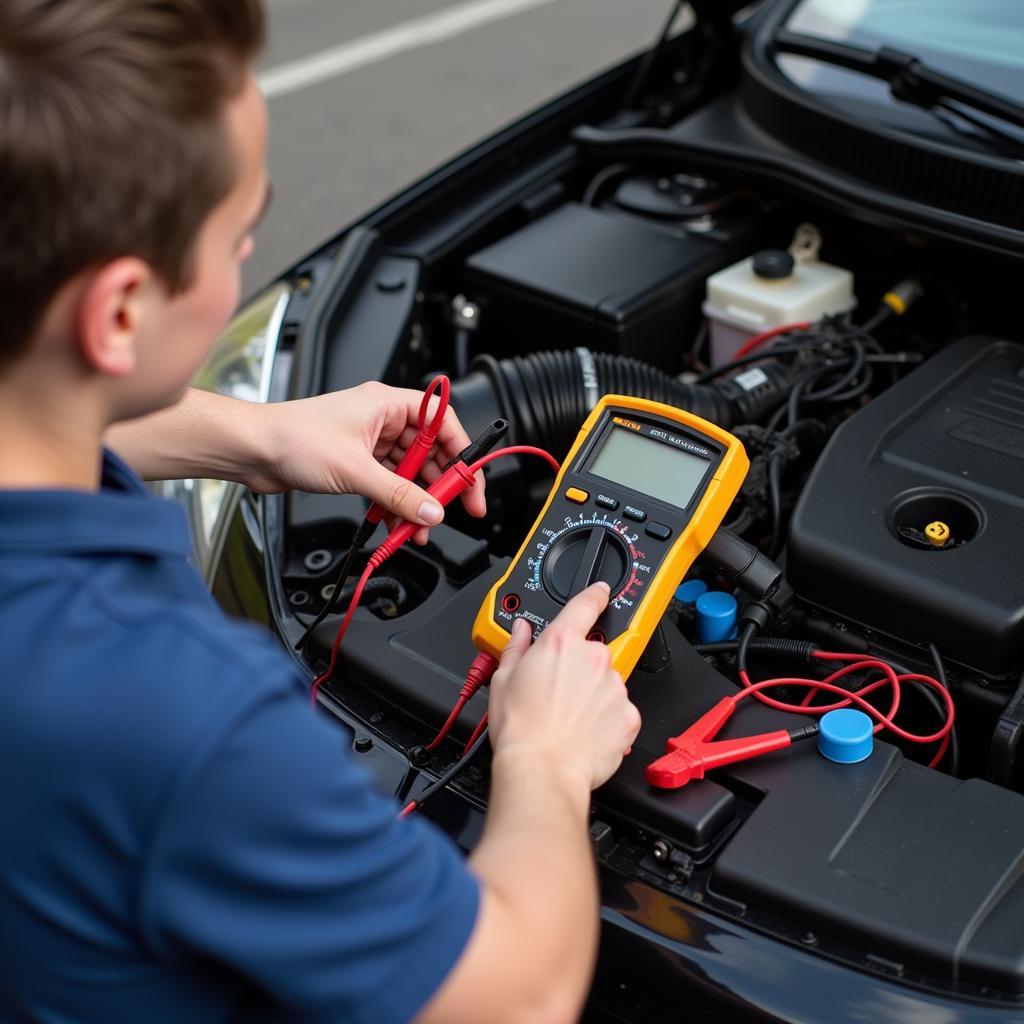A dead car battery is a frustrating experience, leaving you stranded and searching for answers. Whether your battery is consistently dying, struggling to start in cold weather, or suddenly giving up, this guide will help you diagnose the problem, find solutions, and prevent future battery drain.
Why is My Car Battery Dying?
There are several reasons why a car battery might die, ranging from simple fixes to more complex electrical issues. Understanding the potential causes is crucial for effective troubleshooting.
- Age: Car batteries typically last 3-5 years. As a battery ages, its ability to hold a charge diminishes.
- Parasitic Drain: Even when your car is off, certain systems like the clock, radio memory, and security system draw a small amount of power. A faulty component or wiring issue can cause excessive parasitic drain, leading to a dead battery.
- Leaving Lights On: Accidentally leaving headlights, interior lights, or other accessories on can quickly drain a battery.
- Extreme Temperatures: Both extreme heat and cold can impact battery performance. Cold weather slows down chemical reactions within the battery, reducing its capacity. Excessive heat can evaporate the electrolyte and damage the battery’s internal components.
- Bad Alternator: The alternator recharges the battery while the engine is running. A malfunctioning alternator won’t charge the battery properly, eventually leading to a dead battery.
- Corrosion: Corrosion on the battery terminals can impede the flow of current, preventing the battery from charging or discharging effectively.
- Loose or Damaged Cables: Loose or damaged battery cables can also disrupt the flow of current, similar to corrosion.
 Car Battery Corrosion on Terminals
Car Battery Corrosion on Terminals
How to Diagnose a Dying Car Battery
Diagnosing a dying car battery involves several steps, starting with the basics and moving towards more complex checks.
- Visual Inspection: Check the battery terminals for corrosion. Look for any signs of damage or looseness on the battery cables.
- Battery Test: Use a multimeter or a battery tester to check the battery voltage. A fully charged battery should read around 12.6 volts.
- Alternator Test: With the engine running, the voltage across the battery terminals should increase to around 14 volts, indicating a functioning alternator.
- Parasitic Drain Test: Use a multimeter to measure the current draw with the car off. A high current draw suggests a parasitic drain.
 Testing a Car Battery with Multimeter
Testing a Car Battery with Multimeter
What to Do if Your Car Battery Dies
If your car battery dies, you have a few options:
- Jump Start: Jump-starting your car using jumper cables and another vehicle is a common solution.
- Battery Charger: A battery charger can recharge a dead battery, but it takes several hours.
- Replacement: If the battery is old or damaged, replacement is often the best option.
Preventing a Dying Car Battery
Here are some proactive steps to prevent future battery problems:
- Regular Maintenance: Clean the battery terminals regularly to prevent corrosion. Check the battery cables for looseness or damage.
- Turn Off Accessories: Ensure all lights and accessories are turned off when you park your car.
- Limit Short Trips: Short trips don’t give the alternator enough time to fully recharge the battery.
- Battery Tender: If you don’t drive your car frequently, a battery tender can help maintain the battery’s charge.
Remote Diagnostics and Software Solutions
Modern vehicles often have complex electrical systems. Remote diagnostics and software solutions can be invaluable in identifying and addressing underlying issues that contribute to battery drain. As a specialist in automotive electrical engineering, I utilize remote diagnostics and programming to pinpoint issues like faulty modules or software glitches that traditional methods might miss. This approach saves time and money by eliminating guesswork and targeting the root cause of the problem.
“Remote diagnostics allow us to quickly and accurately diagnose battery drain issues without the need for a physical inspection,” says John Smith, Automotive Electrical Engineer. “This technology enables us to identify and resolve complex electrical problems that might otherwise go undetected.”
“By utilizing remote programming, we can update software and fix bugs that contribute to excessive battery drain, ensuring optimal vehicle performance,” adds Smith.
Conclusion
A dying car battery can be a nuisance, but understanding the causes and implementing preventative measures can minimize the risk. From simple checks to more advanced diagnostic techniques, proactively addressing battery issues will keep your car running smoothly. By utilizing remote diagnostics and programming, we can provide fast, accurate, and efficient solutions to your car battery woes.
FAQ
- How often should I replace my car battery? Most car batteries last 3-5 years.
- Can a bad alternator cause a dead battery? Yes, a malfunctioning alternator will not recharge the battery properly.
- How do I jump-start my car? Connect the positive jumper cable to the positive terminal of the dead battery and the positive terminal of the good battery. Connect the negative jumper cable to the negative terminal of the good battery and a metal ground on the car with the dead battery.
- What is a parasitic drain? A parasitic drain is a small amount of current drawn from the battery even when the car is off.
- How can I prevent corrosion on my battery terminals? Regularly clean the terminals with a baking soda and water solution.
- Is it bad to leave my car running while parked? Leaving your car running unnecessarily wastes fuel and can contribute to air pollution. It’s better to turn off the engine when parked.
- What are the signs of a bad battery? Signs include slow engine cranking, dimming lights, clicking sounds when turning the key, and electrical malfunctions.

